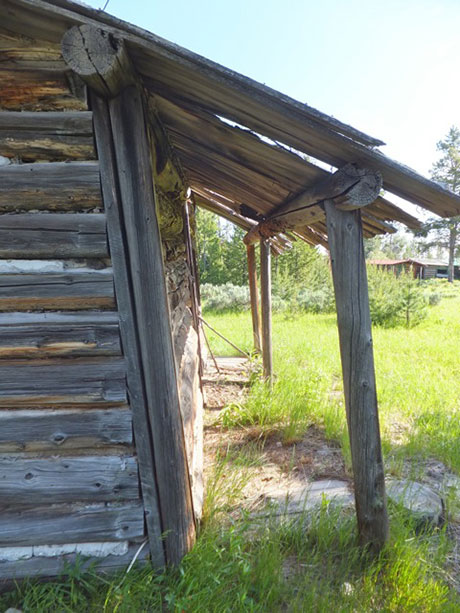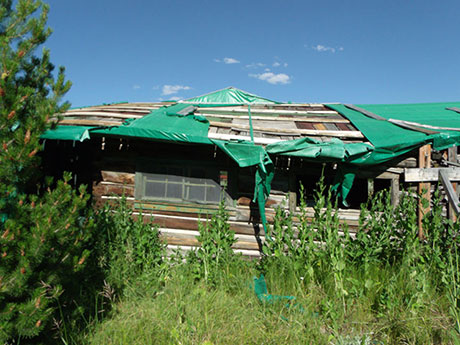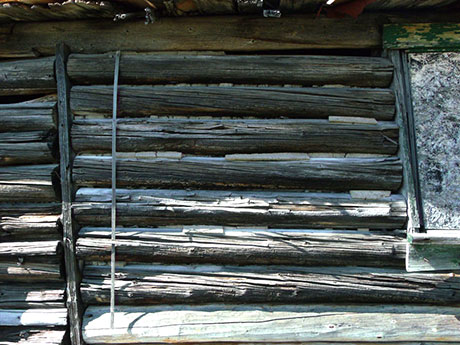|
Structural defects were studied first and the results suggest that the
condition of the walls was significantly related to the condition of
the roofs, i.e. a building with a low score for roof condition often
had walls that also scored low for condition. Although this would seem
to be obvious, the collected data actually supported and expanded the assumption.
Structures with roofs in good condition had walls in good condition and
vise versa. The analysis however, did not show any significant
relationships between walls and foundations or foundations and roofs. The two
recorded environmental variables that had the highest correlation were
roof orientation and the presence of trees within twenty feet.
Orientation directly impacts the amount of sun and shade that a roof
endures and trees add litter to roofs which can retain moisture and
create adverse conditions that speed deterioration of the roll roofing as
well as suffocate the vegetation on sod roofs and possibly change PH
levels. Obviously roofs protect the walls and interiors from exposure
to the environment, but they are topped with sacrificial materials such
as rolled asphalt that is known to decompose due to UV radiation and
moisture.
|
|
Although
many of the walls throughout the site
exhibited signs of damage, overall surface condition was good; however,
the structural condition of the walls did not perform as well and
affected the integrity of the walls as load bearing
components.
These adverse structural conditions were identified as:
- Tilting
- Racking
- Displacement
- Deformation
Wall
corners, purlins and sill logs were obviously identified as focal
points to understanding what environmental factors were causing damage.
An average of tilting, racking, displacement, and deformation scores
helped provide analysis of the sill logs and structural conditions
within the
walls. The presence of mechanical deterioration was often indicated by
a damaged sill log, but damaged sill logs were not good indicators of
mechanical deterioration. Also, not all four of the mechanical
deterioration types were associated with sill condition. The presence
of deformation and tilting often directly involved a sill log in poor
condition, whereas racking and displacement often did not.
The
relationship between purlin condition and the structural condition of
the walls did not provide a good indicator of condition, although
further
analysis of these
2 factors in relation to each wall corner type may demonstrate higher
correlations. For example, box and post log cabins may have worse
structural wall damage and deteriorated purlins, as opposed to more
secure corner types like square notch and saddle joined structures. The
analysis between corner type and structural wall condition showed a
strong relationship between tilting, racking and deformation, however
displacement was not a good indicator of corner condition. |
|
|
 |
| An example of severe "tilting". |
|
 |
| This roof lost its asphalt and was temporarily protected with a tarp. |
|
 |
| Lower log decay from snow contact and UV exposure has resulted in complete replacement. |
|
|





